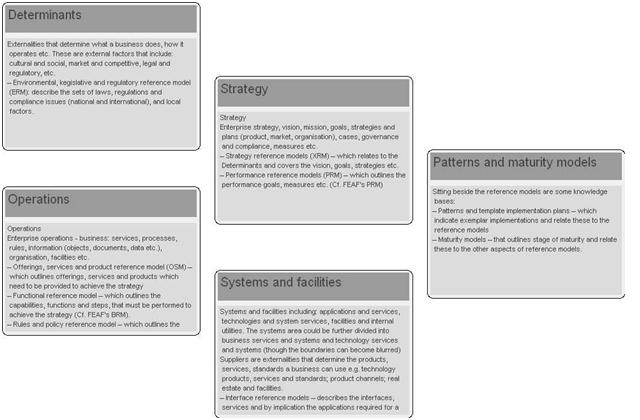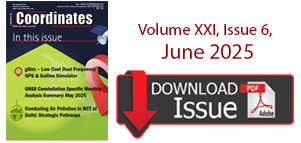| SDI | |
SDI framework
The work of building “Spatial Data Infrastructure” (SDI) is in progress all over the world. There are many challenges: governance, organisational, technical, data sharing, transitional and more. Readers may recall that in Feb 2011 issue we have published the first part of the paper. Here we present the concluding part. |
|
|
||||||
|
||||||
|
||||||
Scope of an SDI framework
Best practice implementations needs to reflect experience: with cost effective world leading operational national systems; several generations of change i.e. experience with different models of private sector and public sector collaboration; in creating and extending systems of policy, regulation and governance; of the affects of different governance regimes, cultures and from international programmes. They therefore need to cover:
– Principles, Patterns and Anti-patterns i.e. lessons on what has worked and what to avoid. Arising from multiple generations of systems (reflecting the economic and social development);
– Collaboration models: indicating interfaces between roles and systems (that in different situations will be private sector or public sector);
– Service and components models: which describe the core components and applicable technologies and standards;
– Standards and technologies: including links to international standards and programmes (ISO/TC211, ISO 19115, FOSS4G etc.);
– Regulatory models: based on past success in the effective systems of policy, regulation and governance in national spatial systems operational delivery. Included in this needs to be recognition of different customary and cultural structures and approaches;
– Promulgation, educational and research models (explain, learn, find out): that identify the activities needed to raise awareness, and underpin new training required and provide a framework for research.
Therefore we propose a set of reference models which capture the fundamental issues
SDI Determinants
– Legislative and regulatory reference model: describe the sets of laws, regulations and compliance issues (national and international).
– Local factors reference model: describes social and cultural factors that influence strategy
NSDI strategy
– Strategy reference models – which relates to the Determinants and covers the vision, goals, strategies etc.
– Performance reference models – which outlines the performance goals, measures etc. (Cf. FEAF’s PRM)
NSDI operations
– Services and product reference model – which outlines the services, products and offerings which need to be provided to achieve the strategy
– Functional reference model – which outlines the capabilities, functions and steps, that must be performed to achieve the strategy (Cf. FEAF’s BRM).
– Rules and policy reference model – which outlines the rules and policies that are required by the strategy and determinants and to support operations.
– Information reference model – which outlines information, metadata and data required by the strategy and determinants and to support operations.
– Organisational reference models – which outlines the organisational units, roles, techniques, skills that are required by the strategy and determinants and to support operations.
NSDI systems and facilities
– Interface reference models – describes the interfaces, services and by implication the applications required for NSDI to operate.
– Technical reference models – describes the technologies, standards required to supports the interfaces.
– Vendor reference model – describes the products, agreements etc. Required
NSDI patterns and maturity models
Sitting beside the reference models are some knowledge bases:
– Patterns and template implementation plans – which indicate exemplar implementations and relate these to the reference models
– Maturity models – that outlines stage of maturity and relate these to the other aspects of reference models.
These reference models are related to allow referential and inferential analysis to be performed. The first three can be considered to represent the requirements and the last two are in the solution domain.
Key characteristics of the SDI framework proposed
We can see a number of other key characteristics we require
– Implementation technology neutral and non-aligned – our NSDI must intrinsically technology and vendor neutral i.e. having no affiliation of alignment, and no preferred SDI technology, products. This allows a clearer focus on the real needs and on standards.
– Accessible by anyone from anywhere – this effectively means Web accessible and is key so that knowledge can accessed where, when and by whom its it required and that knowledge can be capture as a natural by product of field work.
– Supporting different roles, scenarios of use, and levels of control – that is with role based access and presentation, so that people can see what they are interested in in a way that makes sense to them and can change information that is in their domain of control.
– Ensure semantic precision – which ensures it may be analysed with efficiency, fully auditable, that the basis of decisions is explicit, objective and transparent. The lack semantic precision is one of the key problems with most documents.
– Represent idealised models of NSDI – that has a holistic, coherent and complete set of well-structured, unambiguous and well partitioned and categorised set of business definitions (roles, functions, interfaces etc.). Has an explicit conceptual model of how the NSDI organisations are structured and operate (e.g. reporting, controls, data flows etc.)
– Divides the generic framework from the country specific implementation – so the generic framework is reusable and extensible. Allows nations to maintain their know how i.e. how they do things, why they do things – rather than this knowledge be in the hands of third parties with vested interests e.g. consultants, vendors.
– Allows relationships and concepts to be – visualised, analysed and reported on (in SDI we all know that a visualisation can tell convey information in a powerful way).
– As simple as possible – to reduce complexity we limit connections within each level and between each touching levels.
Pages: 1 2














 (38 votes, average: 1.05 out of 5)
(38 votes, average: 1.05 out of 5)





Leave your response!